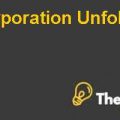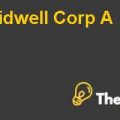Introduction
Google was incorporated in 1998, and became the first popular search engine. The objective of Google was to provide users with access to different websites through search engines by just writing key words or same words. It provides free services to users. Innovation in search and advertising resulted in more usage of its websites and Google’s brand is one of the most recognized brand in the world.
Google generates revenue through online advertising. Google helps millions of companies with respect to grow their businesses. Google primarily generates revenues through performance advertising and brand advertising.
Performance advertising
It creates and delivers ads that user will click and it leads to direct engagement with advertisers. Many performance advertisers pay Google on a cost-per-engagement basis.
Brand advertising
Google helps many companies to enhance users’ awareness of their products and services through videos, text and images etc.
Fast search and high-ads ads matter only if an individual have access to internet. According to the research, only seven billion people in the world have access to internet. That is why Google investing in new projects, like project Loon. Loon has helped many students, in Brazil and farmers in New Zealand, to experience the power of an internet connection. Google intended to bring it to more and more people.
Google valuation
Assumptions
Following assumptions have been made in order to make valuation of Google.
It is assumed that Beta equity is 0.998 (see excel file).
It is assumed that risk free rate is 2.5%.
It is assumed that market risk premium is 6%.
Ke (return required by equity holders) is calculated through Capital asset pricing model. Ke is equal to 8.49%.
Current share price of Google is assumed as $530.66.
Number of outstanding shares are 676.
Current market value is equal to $358,726.
It is assumed that long run growth rate is equal to 3%.
Weighted average cost of capital is 8.37%.
Effective tax rate is 19%.
Free cash flow to firm
First the Market capitalization of Google has been calculated through free cash flow to firm method. Free cash flow to firm shows the total business value that includes the debt and equity as well. The total present value of equity is $496,214 and estimated value per share is $734.04 (see excel file valuation). It is used to measure the financial performance of the organization. It shows the net amount of cash that is generated by the firm. The underlying assumption in FCFF is that company continue to grow, produce and sell products and thus will have cash flow back to the company. It is estimated that revenue willincrease by 24% from first to second year, 23% from second to third year, 17% from third to fourth year, 20% from fourth to fifth year and in sixth it will decrease by 19% (see excel file valuation).
The Free cash flow- All debt and equity of sixth year will continue to grow by 3% till perpetuity. Present value of continuing value is $407,419.5. Total present value of free cash flows is $481,524. The sum of present value of free cash flows and terminal and less outstanding debt is equal to total present value of equity i.e. $496,124.2 (see excel file valuation). Discounting has been made through WACC.
WACC
WACC has been calculated by using cost of debt after tax and cost of equity. The weight of equity in capital structure is 98.5% and the weight of debt in capital structure is almost 1.5% (see excel file valuation). Cost of debt before tax is equal to 0.2%. While calculating WACC it has been made after tax. The effective tax rate is 19%. The return required by equity holders is 8.49% (see excel file valuation).
Google Valuation Case Solution
Free cash flow to Equity
Second the market capitalization of Google has been calculated through free cash flow to equity. It provided the value of only that relates to shareholders. Through Free cash flow to equity the business value of the Google is $491,875.7 and estimated value per share is $727.63. The market value of Google by using FCFF is $496,214 i.e. more than FCFE, since FCFF includes the both Debt and equity.
Free cash flow to equity is the method that is used to measure the much cash be available after deducting all expenses and reinvestment and debt payment. Same assumptions have been used for free cash flow to equity. The present value of terminal value after discounting is $396,686.6 and sum of Present value of free cash flows is $75,163.7 (see excel file valuation). ............................
This is just a sample partial work. Please place the order on the website to get your own originally done Case Solution












